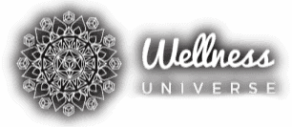20 Tiny Tips for Healthy Alternatives: Creating an Organic, Chemical-Free Household –
Are you overwhelmed trying to create an organic, chemical-free household? I was, too.
Between the conflicting information over “what is healthy” and deceptive marketing (e.g., products labeled non-toxic that had toxic chemicals in them) I nearly gave up.
Thankfully, creating an organic, chemical-free household doesn’t have to be overwhelming. Taking teeny tiny steps, especially those with a big impact, is the key to creating sustainable change; a lifestyle change, one step at a time.
Shared below are some tips that even the busiest people could use to create an organic, chemical-free household.
Here Are 20 Tiny Tips for A Chemical-Free Household:
- Look for the USDA Organic logo on packaged food to know it’s certified organic. The USDA Organic logo means that food is 95% to 100% organic vs. standard food that’s typically grown with pesticides and processed.
- Clean your house once a week to get rid of household dust that contains bits of chemicals from our electronics, clothes, skin, and furniture. Don’t let dust accumulate for months or years.
- Buy clothes with the GOTS Organic certification logo instead of uncertified clothing. GOTS (Global Organic Textile Standard) has the strictest standards for clothing in the world! They look at the material, dye, finish, design, notions, tags, and packaging (plus, social and fair trade).
- Clean with a damp rag. It picks up more dust than a dry rag.
- Cut up old organic cotton clothing to use as cleaning rags instead of using microfiber cloths. You’ll have the healthiest rags on the block!
- Add 2-3 drops of non-toxic dish soap into a bucket of warm water to make a simple cleaning solution instead of buying a pre-made solution. Use for dusting or washing hard-surface floors.
- Choose shirts without vinyl designs. Vinyl, which is used in clothes, building materials, shower curtains, and a ton of other products, is widely viewed as one of the most toxic materials on the market.
- Replace toxic soap with non-toxic ones. Organic castile soap is a popular and healthy alternative to conventional soaps. Plus, it’s easily found at your local grocery store or online.
- Use a deodorant that is the Environmental Working Group (EWG) verified. Made to soak into our skin, chemicals in deodorant can get into our bloodstream. EWG Verified products, found in the EWG Skin Deep database, meet the non-profit’s strictest standards for healthy personal care products.
- Layer organic cotton clothing to stay warm instead of buying polyester sweatshirts. Polyester is made of refined crude oil (as in the oil used to make gasoline) and man-made chemicals. Organic cotton is a healthier alternative to synthetic materials.
- Use cooking utensils made of stainless steel or solid hardwood instead of plastic. That way, you don’t have plastic melting into your food as you cook.
- Buy one new organic food per week. Week one, buy just one organic food item. The next week, buy two. Keep increasing the amount each week until your cart is full of organic food.
- Trade your plastic travel mug for a ceramic one to avoid leaching of plastics into your hot coffee. Heat and moisture increase the amount of leaching of plastic. Therefore, hot coffee or tea becomes a trigger for more chemicals in your morning beverage.
- Switch out your grocery tote for one made of organic cotton. Conventional grocery totes are made of plastic-based materials that aren’t healthy for people or the environment.
- Frame family photos in a metal or ceramic frame. Frames made of composite wood have glues, adhesives, and resins that can be toxic. By choosing metal or ceramic frames, you’re eliminating another potential source of chemicals in your home.
- Buy organic oatmeal, beans, or nuts from bulk bins instead of individually packaged ones. This minimizes the amount of plastic packaging, which can leach chemicals into food.
- Leave shoes at the door to avoid tracking of oils and chemicals into the house. Oils from parking lots and asphalt, pesticide sprays and granules, and construction debris from remodeled buildings can stick on shoes and be tracked into the house.
- Turn off electronics when not in use. When running, electronics add bits of plastic, flame retardants and other chemicals to the household dust.
- Use time-tested natural cleaners such as vinegar and hydrogen peroxide to disinfect surfaces. Hydrogen peroxide is referred to as “natural bleach.”
- Store left-over food in a ceramic or glass container instead of plastic. Ceramic and glass are widely accepted as two of the healthiest materials available.
Final Thoughts:
Finding healthy alternatives to products made of toxic chemicals can be overwhelming. Between conflicting information and mis-advertising, it can be tough to know what’s healthy and what’s not.
But it doesn’t have to be.
By following the 20 tiny tips in this article, you’ll be well on your way to creating your best organic, chemical-free household, one step at a time.
– Angela
How did this article make you feel? Leave your comments for Angela below. Please share this if you liked it. Thank you!
* Please See Our Disclaimer Below *
We have created a safe space to discuss this topic with 4 Wellness Universe Experts. Our goal is to help you heal from your emotional trauma and have health, well-being, and joy in your life once this trauma is realized and released.
Find great products and services for your well-being from members of The Wellness Universe!
Angela Cummings is a writer, organic lifestyle coach, and presenter with a passion for helping people live their best organic chemical-free lifestyle. Since 2014, Angela has been a professional freelance writer and consultant for individuals and companies internationally.






